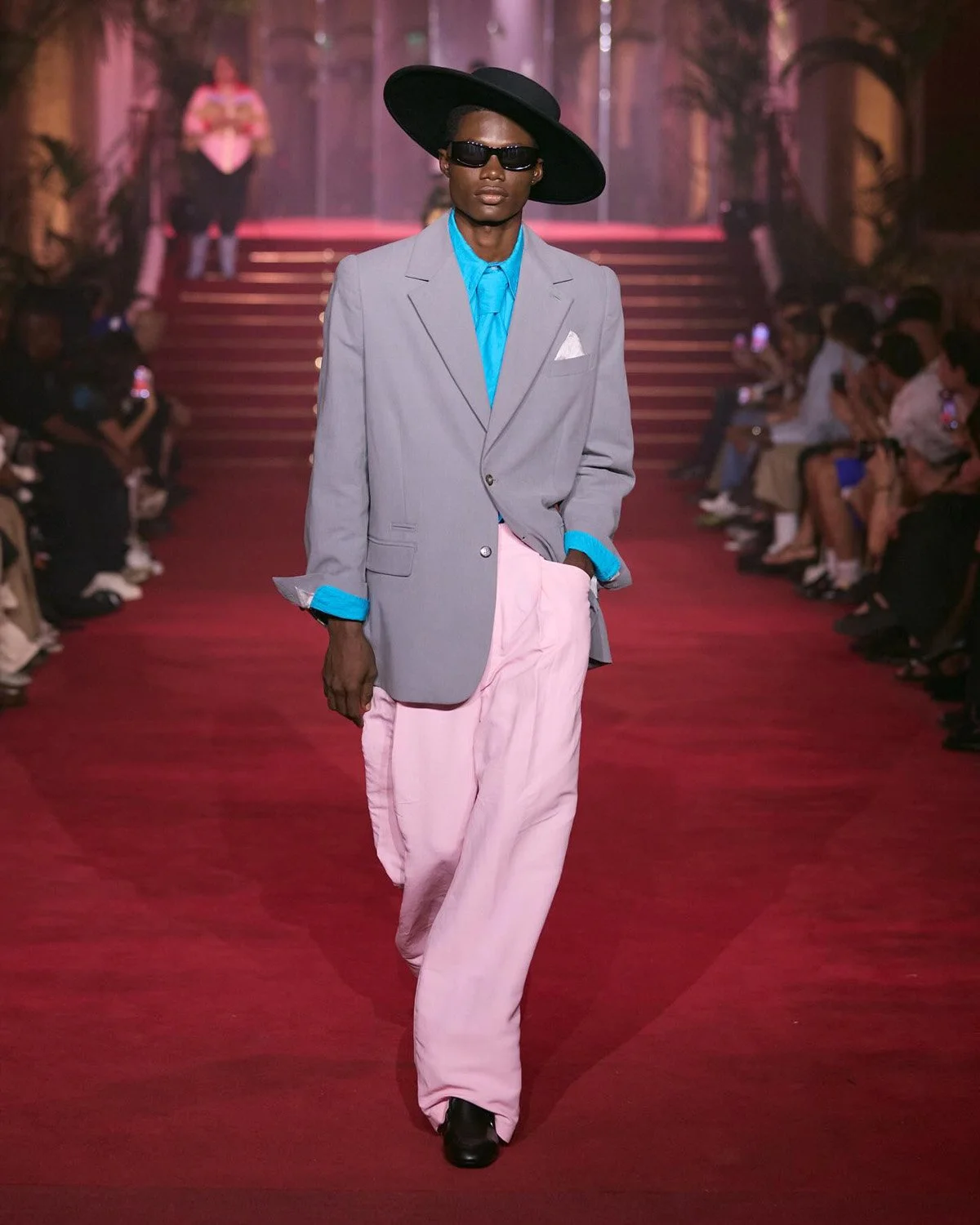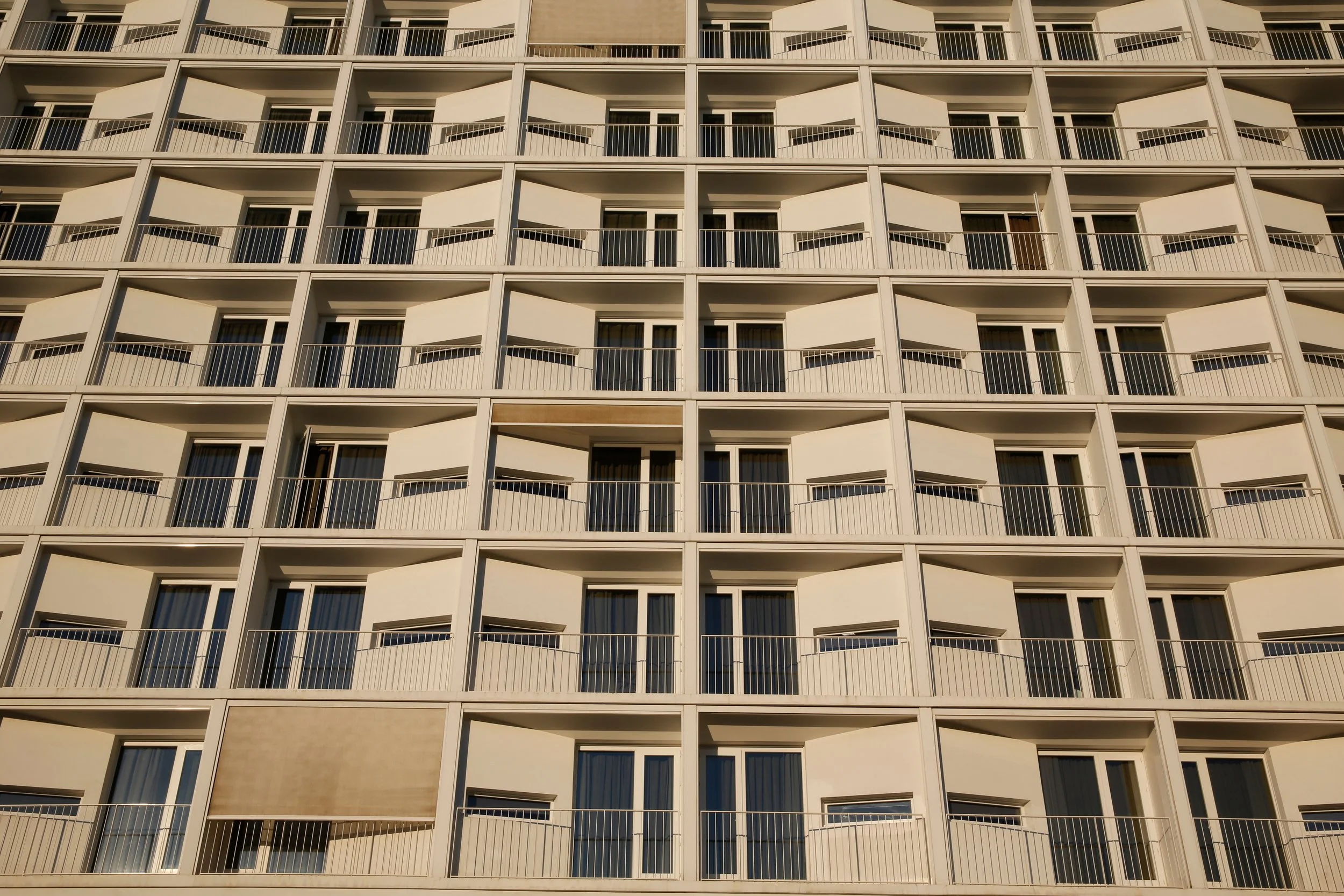Pastel Politics: How Willy Chavarria Stitched Resistance into Paris Fashion Week
Huron SS26 By Willy Chavarria | Images Source: Willy Chavarria
In late June 2025, Willy Chavarria’s HURON collection opened Paris Fashion Week with the single file steps of 35 street-cast men. With shaved heads, oversized white tees and shorts, the men kneeled on the runway, with hands clasped behind their backs, as an acoustic “California Dreamin’” drifted through the hall.
Each shirt bore the ACLU’s logo and its rallying cry, “Beyond one person, party or side,” a direct rebuke to ICE raids tearing apart California farm-worker families. When the men rose, Chavarria unleashed bubblegum-pink ties, mint-green “uniform” suits and papaya-yellow knits—pastels charged as acts of resistance against both political erasure and luxury’s minimalist aesthetic.
From this loaded prologue flowed a runway riot of color, sound and symbolism: red roses handed to family members, Vivir Quintana’s protest anthem, even an upside-down “AMERICA” printed on a T-shirt. It was a declaration that couture can archive community pain and power—and that the front row of a fashion show is as much a site of witness as a gallery wall
Magazine after magazine noted that Chavarria had turned “California Dreamin’” and songs like Vivir Quintana’s “Te Mereces Un Amor” into protest music. In his finale, Chavarria handed red roses to family members seated in the front row. Over the speakers rang a cover of “This Land Is Your Land,” a final reminder that “this land was made for you and me”.
Willy Chavarria: Roots to Zoots
Chavarria, a Mexican-American designer raised in Huron, California, built his label on exactly this alchemy of intimacy and insurgency. Born to a migrant-worker family, he learned early that clothing carries stories of identity and struggle. From his very first collection, Chavarria cast only models of color, weaving Chicano signifiers—zoot-suit tailoring, factory-style jumpsuits and veterans’ T-shirts—into high-fashion declarations of identity, resistance, and the celebration of Chicano culture.
The zoot suit itself carries the weight of defiance. In the 1930s and ’40s, Mexican-American Pachucos in Los Angeles and El Paso deliberately cut jackets with exaggerated shoulders, nipped waists and tapered “pegged” trousers—a sartorial rebuke to World War II–era rationing and wartime austerity.
That bold excess provoked the 1943 Zoot Suit Riots, when U.S. servicemen attacked Latino youths for what they wore. By reimagining the zoot silhouette in sumptuous fabrics today, Chavarria channels that same Pachuco bravado, reminding us that style can—and must—protest the laws and sentiments that once policed minority bodies.
“I’m not interested in luxury as a symbol of privilege. I’m interested in luxury as a symbol of truth in one’s own character. Exquisite tailoring and craftsmanship worn to elevate one’s personal intent – that’s power. That’s fashion." —Willy Chavarria
Chavarria’s work insists that what we wear matters not only for aesthetics but for agency. In his spring 2025 collection, he debuted a series of denim chore jackets embroidered with farmworker protest slogans—an homage to César Chávez’s United Farm Workers movement—paired with acid-wash jeans cut in the shape of the bracero uniforms his grandfather once wore.
In fall 2024, he reimagined the classic bomber jacket as a canvas of community cartography, its lining printed with maps of Huron and surrounding fields where his family once picked grapes. Each piece archives a memory and urges both wearer and witness to remember, respond and resist.
What Fashion Asks of Us
Chavarria once told The Cut that “clothing is a pact between maker and wearer.” HURON asks us to honor that pact. It demands that we archive the show not as a fleeting moment but as an entry in the history of cultural resistance. It asks us to amplify the voices stitched into each seam—supporting the ACLU, local farmworker unions and immigrants’ rights groups. It asks us to align our values, treating purchases and applauses as political acts. And it asks for accountability: to confront the policies that necessitate runway kneelings and pastel uniforms in the first place.
In Willy Chavarria’s hands, fashion becomes far more than a reflection of culture—it is a catalyst for remembrance, solidarity and change. When the lights finally dim on the Salle Pleyel runway, the real work begins: weaving those lessons back into our daily lives.
In practice, that looks like:
Archiving the moment. Save and share the images and stories behind the HURON show. Write about it, repost it, reference it. Treat these clothes and tableaux as historical testimony.
Amplifying the cause. Follow and give to groups like the ACLU and local advocacy organizations. Share firsthand stories of Huron’s farmworkers, the families torn apart by ICE raids and get loud by standing against the growing anti-immigrant, anti-Latino narratives encroaching into government policy.
Aligning your values. Talk about this show with your networks. Press your lawmakers to explain or change the policies that make such a protest necessary. Remember that fashion isn’t neutral and our own choices (and silences) either support or undermine these messages.
Demanding accountability. These runway scenes are visual indictments of state violence and the cruelty and inhumanity of immigration policy. Hold institutions to account: protest racist enforcement, expose complicity and reject the scapegoating of Latino and immigrant communities.





